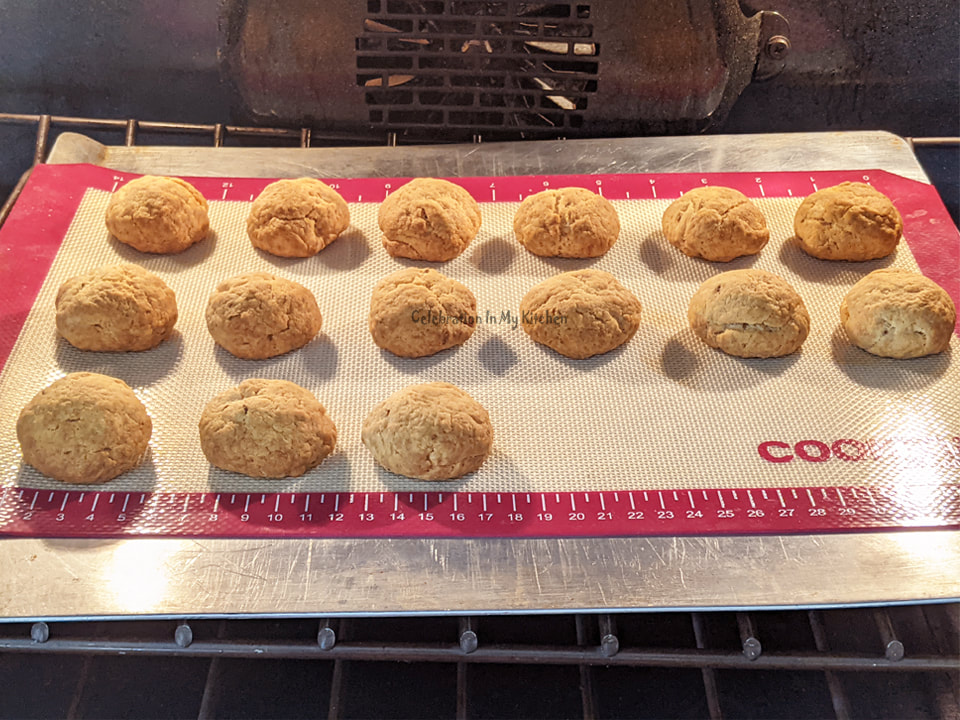The origin of batasa traces back to the 1800s when the Dutch colonizers were running a successful bakery in Surat. Before leaving India, they handed over their bakery to an employee Mr. Faramji Dotivala who was a Parsi. He continued to bake bread for the next group of European settlers. Once they too started going back to their countries, there were a lot of leftover loaves of bread at the bakery that were distributed to the poor. To prolong the shelf life, Mr. Dotivala started using toddy to ferment the bread. As the loaves of bread sat on the shelf for days, they lost moisture, turning hard. The firm texture soon became a favourite among the locals. Doctors too recommended the stale bread to patients as it was easy to eat and kept them full. As demand for this bread increased, Mr. Dotivala made smaller dried buns and then, bite-sized ones which led to the creation of batasa. Gradually, it was enriched with pure ghee (clarified butter) and caraway seeds. This bread turned biscuit was an instant hit. Savoury, buttery, crumbly, a tea time delight that holds a special honour among the Parsi community. As years went by, batasa was made with vanaspati (hydrogenated vegetable oils) and toddy replaced with yeast. Depending on personal preferences, batasa can be tailored to suit one’s palate with either cumin seeds, almonds or even cheese.
Batasa also known as Jeera Butter or Makhania is easy to make at home. One of my favourite as a teen and even today. To achieve a light and flaky bite, cold pieces of butter have to be rubbed into the flour to coat it well. During baking, the fat melts creating pockets of air between layers of the baked dough. This gives the biscuit a flaky texture and rich buttery taste. A perfect batasa should have a hard exterior, be crumbly within and light enough to float on top when it is dropped into a cup of tea.
Batasa also known as Jeera Butter or Makhania is easy to make at home. One of my favourite as a teen and even today. To achieve a light and flaky bite, cold pieces of butter have to be rubbed into the flour to coat it well. During baking, the fat melts creating pockets of air between layers of the baked dough. This gives the biscuit a flaky texture and rich buttery taste. A perfect batasa should have a hard exterior, be crumbly within and light enough to float on top when it is dropped into a cup of tea.
Jeera Butter/Batasa/Makhania
(Yields 15)
Ingredients:
1 and 1/4 cups all-purpose flour (sifted)
1/2 cup unsalted butter (chilled and cut into cubes)
1/4 cup milk powder (sifted)
1 teaspoon + a pinch of sugar
1 teaspoon dry active yeast
1 teaspoon caraway or cumin seeds
1/4 cup lukewarm water
1/4 teaspoon salt
Method:
Proof the yeast with lukewarm water and a pinch of sugar. Set aside for 5 minutes to foam and froth.
In a bowl, rub butter with flour, milk powder and salt to coat well. Add yeast mixture and cumin seeds. Combine to form a smooth dough.
Transfer dough into a greased bowl and cover with a plastic wrap to double in size in a warm place for 1 and 1/2 hours.
Deflate the dough and form uniform balls with 1 tablespoon measuring spoon. Place balls inches apart from one another on a silpat or parchment paper placed on a baking sheet.
Set balls to rise for 10 minutes. In the meantime, preheat the oven to 350 F or 180 C.
Bake for 30 minutes until crisp, flaky and brown.
Serve batasa with a cup of hot tea or coffee.
(Yields 15)
Ingredients:
1 and 1/4 cups all-purpose flour (sifted)
1/2 cup unsalted butter (chilled and cut into cubes)
1/4 cup milk powder (sifted)
1 teaspoon + a pinch of sugar
1 teaspoon dry active yeast
1 teaspoon caraway or cumin seeds
1/4 cup lukewarm water
1/4 teaspoon salt
Method:
Proof the yeast with lukewarm water and a pinch of sugar. Set aside for 5 minutes to foam and froth.
In a bowl, rub butter with flour, milk powder and salt to coat well. Add yeast mixture and cumin seeds. Combine to form a smooth dough.
Transfer dough into a greased bowl and cover with a plastic wrap to double in size in a warm place for 1 and 1/2 hours.
Deflate the dough and form uniform balls with 1 tablespoon measuring spoon. Place balls inches apart from one another on a silpat or parchment paper placed on a baking sheet.
Set balls to rise for 10 minutes. In the meantime, preheat the oven to 350 F or 180 C.
Bake for 30 minutes until crisp, flaky and brown.
Serve batasa with a cup of hot tea or coffee.








